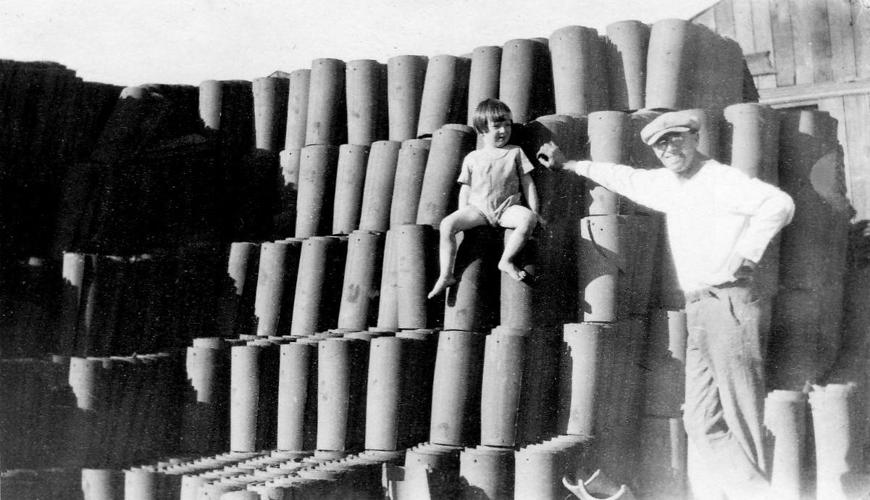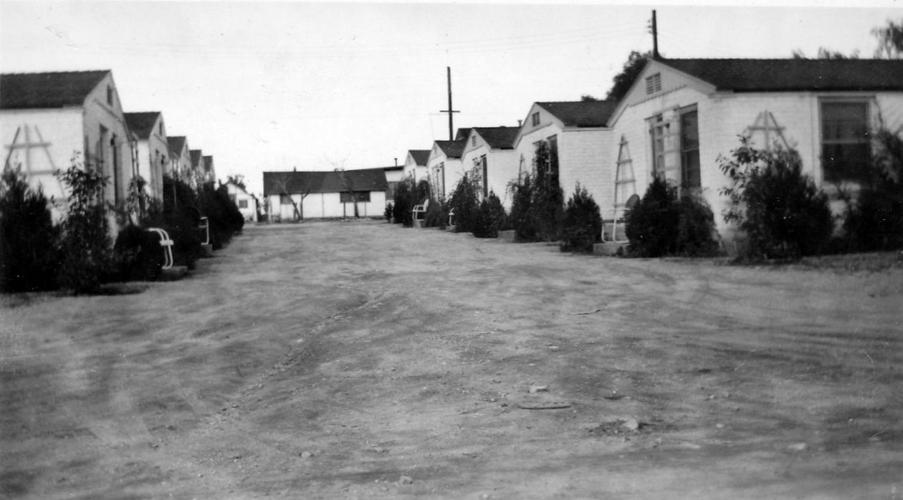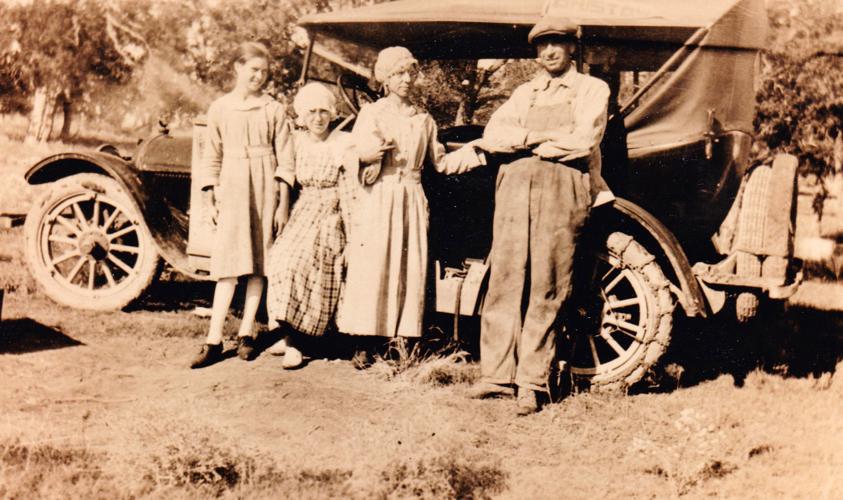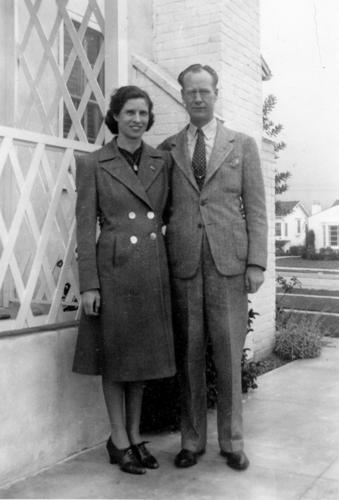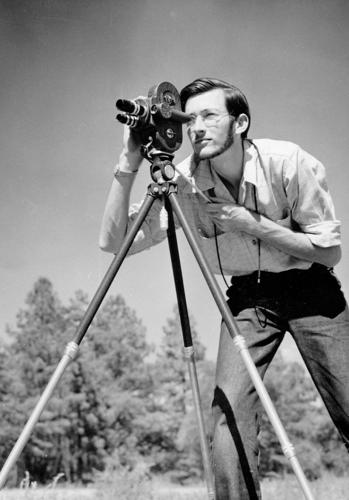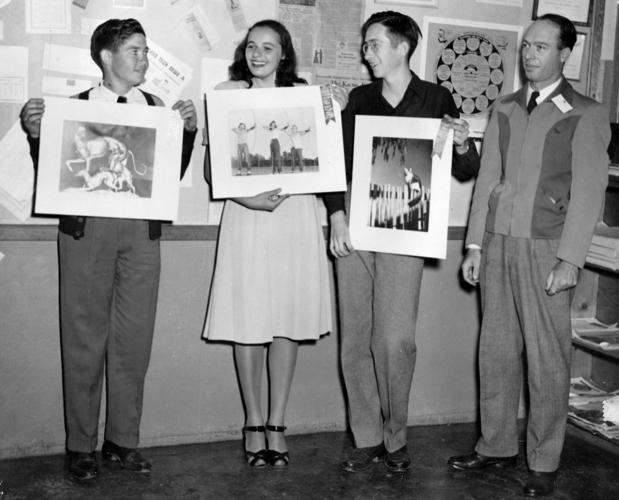A man who brought some of the first red-tile roofs to Tucson is remembered with a street named after him in midtown.
F. Fred Roberts was born Frank Frederick Roberts on Dec. 11, 1897. When he was about 5 years old, his family relocated from Cleveland to Los Angeles due to his father’s asthma. His father taught speech at the University of Southern California before changing careers and working as a real estate agent.
By 1905, the Roberts family lived in Hollywood, California, then a small village of about 2,000 people that boasted abundant mountain water and no saloons. The Roberts had a fine home surrounded by large fruit trees on several acres in the foothills.
In 1924, while in Pasadena, Roberts met and married Gladys Towner. They had sons Ralph and Frederick Almartin, whose middle name was a combination of his grandfathers’ middle names, Almarion and Martin.
In 1926, Roberts and a partner started making Spanish roof tiles for home construction. Their factory was in the San Fernando Valley, in the town of Reseda.
Three years later the Great Depression hit and, even though Roberts had a degree in electrical engineering from the California Institute of Technology, employment was tough to come by.
Roberts had heard that the depression hadn’t hit Tucson as hard as most places in California. So in late 1929, he rode his motorcycle here over mostly dirt roads and, at one point, plank roads. Later he brought a truckload of Spanish tiles that weren’t selling in California to sell here. They didn’t sell here, either, but he built his first Tucson home using them on the roof.
In August 1930, he brought his wife and two children to Tucson, but when the family arrived at the home he had for them, his wife disliked it so much she cried.
The following month, Roberts traded the house he had built for five lots.
In 1931 and 1932, he resubdivided the old Catalina Farms Addition, near present-day Columbus Boulevard and Grant Road, and renamed it El Pasadena Tract, almost certainly after their former home town. From 1934 to 1936, Gladys ran a boarding house in Los Angeles that was leased by her husband.
One of the boys lived with her and the other lived with her parents, Earl A. and Georgia Towner, in Pasadena. Meanwhile, Roberts was in Tucson or California, finding whatever work was available .
In 1936, the family moved permanently to Tucson. They relocated several times as Roberts bought, fixed up and sold house after house. At one home, at 807 E. Speedway, the family took in boarders to help pay the rent.
From around 1938 to 1940, Roberts developed land owned by his in-laws, the Towners, between Grant Road and Glenn Street just east of Country Club Road. It’s believed the Towners named it the Roberts Addition in honor of their son-in-law and named Towner Street for themselves.
Around 1941, Roberts built the Adams Court at 724 E. Adams St., across the street from The Castle Apartments. The apartment building originally was the Whitwell Hospital, later called Southern Methodist Hospital.
In 1943, Roberts recorded two small subdivisions. The Huff Addition was between Eighth Street and Broadway, with Sawtelle Avenue running down the skinny piece of land to about where Rocco’s Little Chicago Pizzeria now sits. The subdivision was named for Roberts’ brother-in-law, Andrew Huff.
The other subdivision, the Towner Addition, was just south of Grant Road between Swan Road and Columbus Boulevard and was named for the Towners. As Roberts was surveying to lay out a street, he told his teenage son Ralph that if he held the string for him, he would name the street in the boy’s honor. Ralph Avenue was born.
In late 1944, Roberts recorded the Almartin Addition on the southeast corner of Country Club Road and Glenn Street, named for his other son. He also named Almartin Street, although its unknown if his older son had to hold string to get that street named for him.
Following World War II, building increased in Tucson as construction materials once again became available. Roberts sold lots and offered construction loans to people who would, in turn, build their own houses.
In 1946, Roberts incorporated Roberts Development Co. Also that year, Glady’s sister, Zulemma, and her husband, Huff, moved from Pasadena to Tucson to work for his new company. Zulemma was Roberts’ secretary — she used her kitchen table as a desk and had to clean it off for each meal.
Andy was the salesman for the company and sold lots. He would sit in his car at the Alvernon Addition, on the northeast corner of Alvernon Way and Fifth Street, waiting for customers to come and buy a lot.
He was once told, “You will never sell lots way out here.”
In the middle of the Alvernon Addition, Roberts named the street Roberts Place, likely in honor of himself or himself and Gladys.
Throughout the 1940s, ’50s and ’60s, Roberts developed many other properties, including some with California-inspired names: Loma Linda Estates, San Fernando Village, Colonia del Valle and Casa Loma Estates. Other developments bore the name of the street the land was on, including the Craycroft Addition, Craycroft Annex and Columbus Addition.
Roberts served on the Gospel Rescue Mission’s board of directors for many years. He passed away in 1970.
Roberts Development Co. continues under the direction of his grandson, Philip Roberts.


